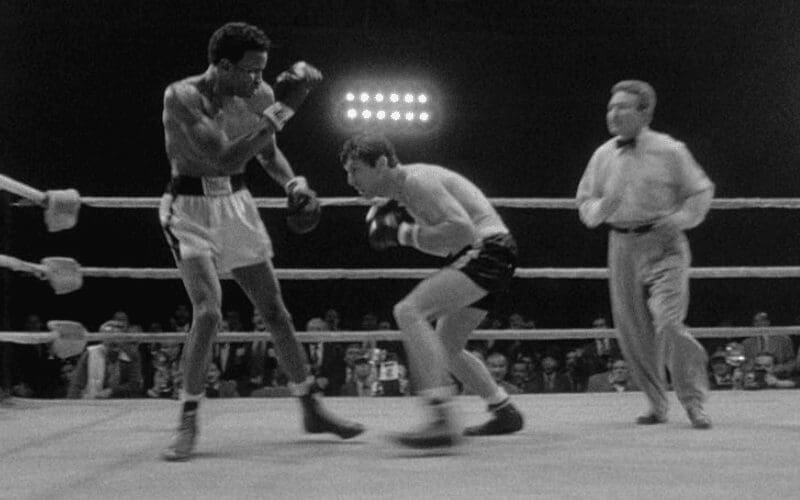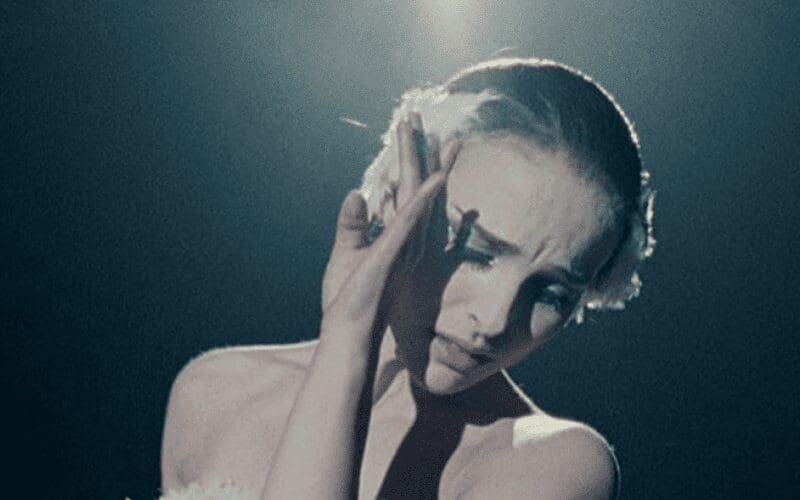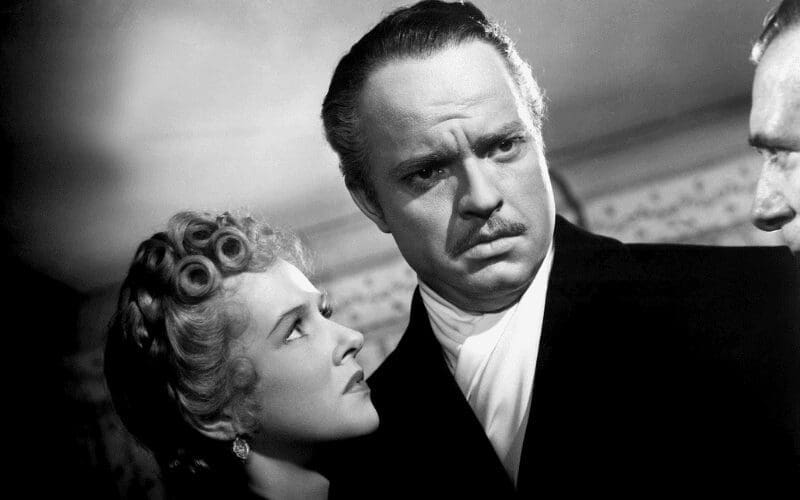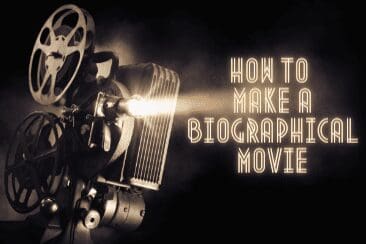Characters are the essential heartbeat of any film, no matter what the genre, style, or culture of the film. The living characters of live-action films are how we see their world – particularly in a character study. The characters draw the audience into worlds we cannot access, visit, or experience. They are also the eyes in which the audience sees their world.

You might ask, ‘all films have characters, so doesn’t that make them all character studies?’
The answer to that one is difficult, you can choose to examine characters in any film as much as you’d like, but with character study, the movie itself often does that for the audience.
This article aims to first understand character studies throughout cinema and what makes them so good. Additionally, how the characters at the heart of them stand out. Finally, we’ll include some actionable and clear tips on how to write a character study yourself.
Be sure to stay tuned so you don’t miss any crucial information. Let’s see if you can spot your favorite characters!
What Is A Character Study?

To define character study, it’s essentially a story about looking inwards. A character study in literature, and later film, are characterized by a foregone narrative for the sake of following one character (sometimes a couple) very closely. To put it otherwise, in a character study, the primary conflict is internal rather than external.
Throughout the years, character studies have become one of the most critically acclaimed genres of film. 2021’s Best Picture Winner, Nomadland is a recent example of a successful character study. Although character studies are still going strong in the present day, they’ve been a force to be reckoned with since the early days of cinema.
Examples Of Character Studies
Before we delve into some tips on writing a character study, let’s see some of the greats throughout time!
Citizen Kane (1941)

This character is as timeless as the time that it spans. The story follows the entire life and death of Charlie Kane, a prolific newspaper editor. This film is widely regarded as one of, if not the best film ever made. What makes this film so fantastic isn’t just the central performance by director Orson Welles, albeit excellent.
What makes this film special is the perfectly written arc that the protagonist goes through. We watch the selfish, money-driven Kane lose friendships, lovers, and support through his own actions.
This film is about how the past affects the present. At every next moment of his life, we see how it is merely a consequence of decisions made before it. This focus on chronology only leaves the importance around his final word, Rosebud, even more powerful, when its meaning is revealed in the final shot of this masterpiece. A brilliant use of the classic literary technique, Chekhov’s Gun: “don’t put a rifle on stage if it isn’t going to go off at some point”.
Raging Bull (1980)

Another film was shot in black and white, yet with depth for potential analysis of the full-color spectrum. Raging Bull follows prolific boxer Jake La Motta (Robert De Niro) through the peak of his boxing career. A man riddled with insecurity, we see this taken out on his wife and brother. They are a pair of supporting characters who are subservient to his ego through most of his tale.
This film tells stories with its masterfully shot fight sequences. When La Motta wins we see the triumph, beating his long-time rival Sugar Ray Robinson. But, in the aftermath, we see his overconfidence and complacency as he puts on weight before the rematch.
Loss only sees La Motta weaken. Despite what the self-serving man would want, instead of ending on a high, the audience watches his life fizzle away and by as he passes his prime. What the audience sees towards the film’s final act, is the face of a man filled with regret.
Raging Bull features a tour-de-force performance by De Niro, who melts into the role. What this film does right as a character study is make the audience still feel engaged. Even in spite of the fact La Motta has almost no redeeming character points. The audience is still interested in his story, in the world around him. Scorsese does this through vulnerable supporting characters who want to succeed in the face of this boxing tyrant’s cruelty.
Black Swan (2010)

What we’ve found so far in character studies is a pattern of the lead being a, mainly, unlikeable and troubled character. In Black Swan, Natalie Portman’s Nina is troubled but vulnerable, unlike so many of the leads of this genre. Portman’s character is not afraid to be confused, afraid, and lost in the dangerous world of Ballet.
What makes Black Swan stand out too is its use of a female lead. The examination of a female character is far too rare in character studies that have so often focused on men. When researching character studies, and looking through classically ranked films, it’s more difficult than it should be to find character studies with a female lead.
This film voices the pressures of being a ballerina in the upper echelon of the world of dance, and the brutal stride to be perfect. This character study resonates so much through its intoxicating and fearful tone as it meets the audience’s own need to reach the goals set by others. The film invokes the primal fear of competition that Portman feels with Mila Kunis’ character Lily.
Taxi Driver (1978)

What’s a list of great character studies without Taxi Driver? And here he is again, Robert De Niro, this time as Travis Bickle. The lonely, hate-filled, complex New York cab driver who becomes entangled with people from all walks of life – from Politicians to Pimps. This is also the second appearance of Martin Scorsese who features on our list of The Best Filmmakers of all time.
Taxi Driver is a fantastic example of a character study that is so much more than just one man. Take, for example, the score, from Bernard Herrmann. This jazz masterpiece was the last piece of music Herrmann wrote, before his death. It is considered by many to be his unrivaled best work. The saxophone and strings create amazingly serene sounds, which so often veer into off-tempo, unsettling pieces.
The nature of this score represents the image the director Martin Scorsese painted of New York at the time. From a wide view, it is a beautiful city. However, our view changes once we spend time with it and see it from a street view, just as Bickle does from his taxi. Only then does its more ugly and unpredictable underbelly rear its head.
This film isn’t just an examination of Bickle, it’s a study of how he fits into New York. Scorsese explores how the dark, drab environment affects him. The location is a character of itself in this classic, making it stand out from so many other films.
Five Key Tips For Writing Character Studies
Now that we have gone through what a character study is, let’s go through how to write one.
Logline Focus

It’s easy to forget as a filmmaker that so much of a screenplay, especially in character analysis movies, is in how you can tell the tale to someone else shortly and excitingly. This, of course, is the logline, the one or two-sentence description of your feature film. In a logline, it’s important to make your character stand out.
A good line needs to show who the character is in your character study as well as what’s at stake. This showing of the stakes instantly gives the audience a purpose to root for your lead.
A good example of a brilliant logline for a character study is the aforementioned Taxi Driver: A Vietnam vet, working as a cab driver in NYC, struggles to cope with his surrounds and deal with his inner demons bearing down. Concise, mysterious, and accurate. This logline tells us about the action, the lead, and how those two things will come into conflict.
Make The Setting Vital

In “Joker” it’s the always dirty, always miserable, oppressive environment of Gotham City that affects the lead character’s mental state. However, it’s far more complex than that.
Because of the crushing feeling of his surroundings, the spectator begins to, in some strange way, sympathize with Joaquin Phoenix’s character’s tortured life. His sick mother, dilapidated apartment, and dark chiaroscuro lighting light the miserable scenes of his life.
All these elements of the mise-en-scene make the character more interesting. It additionally, gives your lead more things to interact with when writing a character analysis. The more different interactions they have, the fuller the picture the audience can paint of them.
Pick The Ultimate Combination

It’s important to realize in a character study that although this genre often explores all walks of life. Just any old person, in any old place, isn’t always interesting. The goal as a writer is to be incendiary with your plot. To pick characters that are out of place, or against the odds.
Take ‘a rugby player in a rugby team’ for example. Sure the story might be good, but what if that rugby player had to fill in for an American football team?
Spectators enjoy watching odds overcome, so once you’ve developed the setting, make sure it juxtaposes your lead. Alternatively, challenges them in the most entertaining way possible. Not everyone wants to watch a fish swim, but everyone wants to see a fish dance.
What’s A Normal Day?

To fully develop characters when writing character studies in literature or film, it’s important to set out what their average day consists of. This is used so that when it becomes distorted the audience instantly recognizes it. In parallel to the character, the audience knows that something is up, without exposition (that stagnates the plot) needed.
For this, the main character’s normal day doesn’t need to be normal at all. For example in The King of Comedy, aspiring comic Rupert Pupkin lives off the scraps of Hollywood and Late Night Talk Shows. Hustling, grabbing autographs, and learning from his comedy idols in an almost intrusive way.
So when Pumpkin begins to catch a break, entering the office of his hero, Jerry Langford, the audience knows that the journey of your character can go up or down depending on the events of the next sequence. This is because we know, this isn’t normal for our hero. In film, it is often referred to as an inciting incident or a catalyst.
Avoid Stagnancy

Stagnancy can be confused with patience in film. Patience quietly builds, and stagnancy quietly kills. Think about stagnancy in a film like this: imagine your movie is a cup, the more you fill your cup with curdled milk, the more curdled milk you have to drink (sure you could not drink it… but you want people to come and see the movie, right?) So you’d want to get zero curdled milk in it because even one drop could put some people off.
The way to not have any curdled milk in your cup, or stagnancy in your story? Don’t turn the tap on. And keep checking it’s not on. Throughout your screenplay, don’t allow your character to be doing something that does not drive the plot forward. Or at least give purpose to the character study.
Again, this doesn’t mean you must sprint at 100mph, as said before, patience builds. If your character is not in an action-packed or pivotal moment, let that audience’s respite build towards the next key point. Have them ponder their feelings, not just sit in the armchair. Or perhaps plan out another idea instead of watching television. The spectator doesn’t need to be reminded of the normal day which you have already put on display.
That Was Our Guide On Character Studies

This all encompassing genre is impossible to wrap up all in one article, but we hope to have given the best overview possible. This most detailed and exploratory sub-section of the film is very dear to our hearts!
Character studying, throughout cinema, seems to be immune to the ebb and flow of popular culture. With them almost always receiving critical acclaim (when deserved) and never falling out of favor with audiences who love to become embroiled in new characters each time they watch a movie.
Maybe your character study will be next on their list!
Would you like to read more fun filmmaking content? Then make sure that you head over to the Мusic Gateway blog – we have everything that you need! You could learn How To Become A Director, How to Become a Movie Producer, How to Become a Screenwriter and plenty more! So, what are you waiting for? Check them out today!











